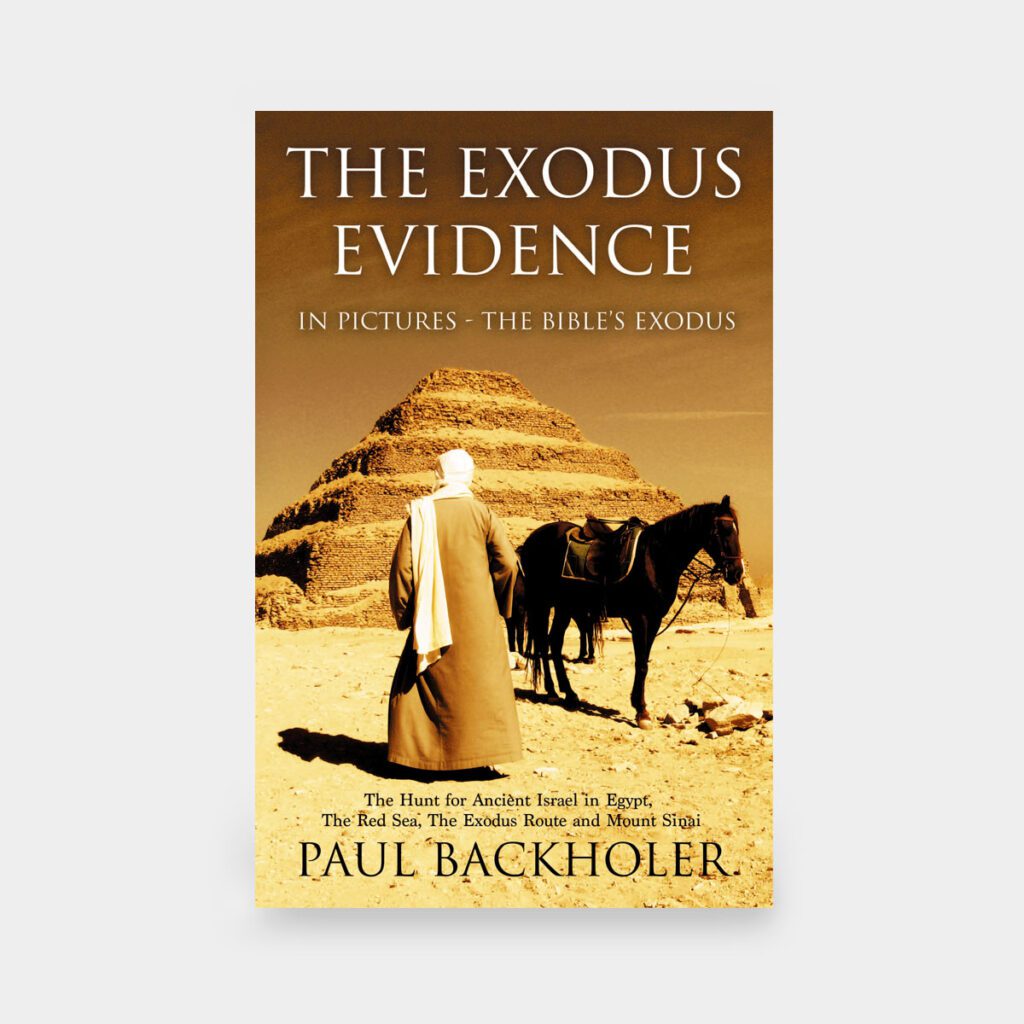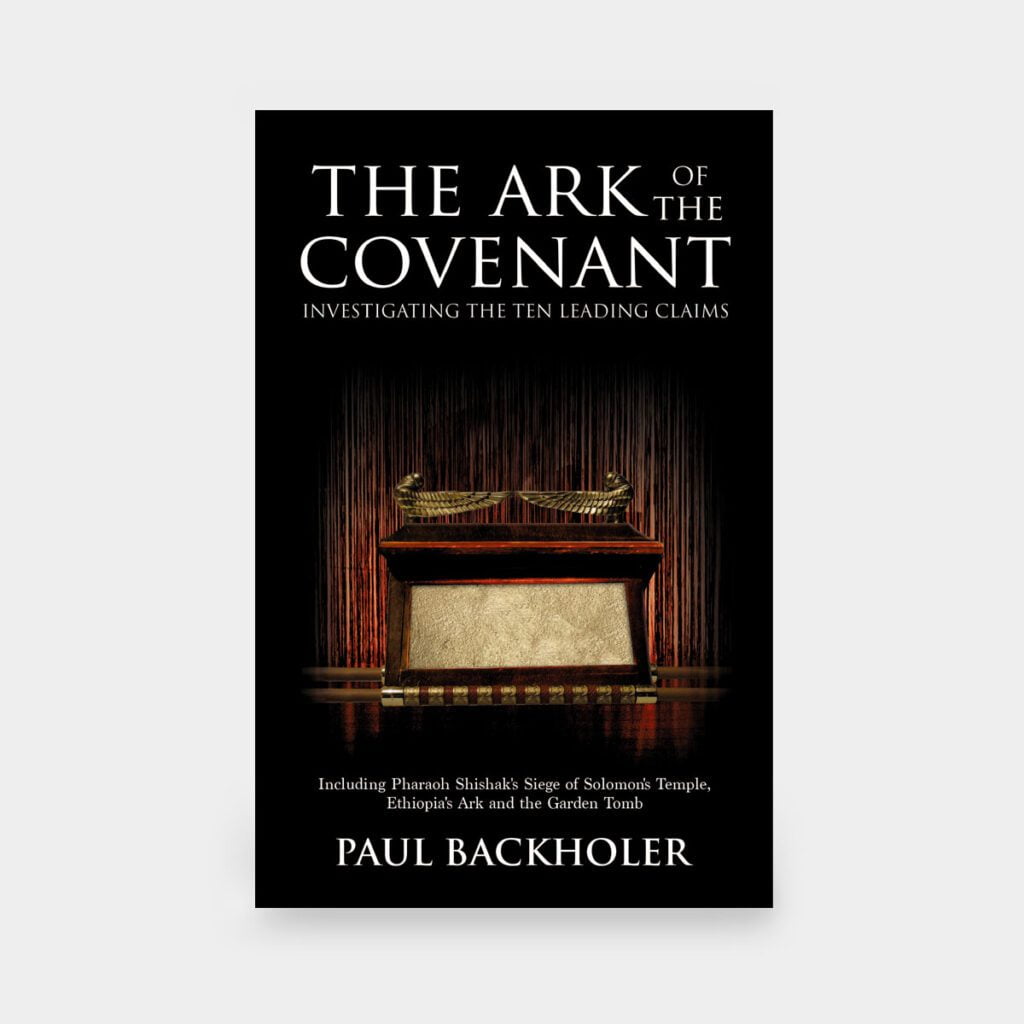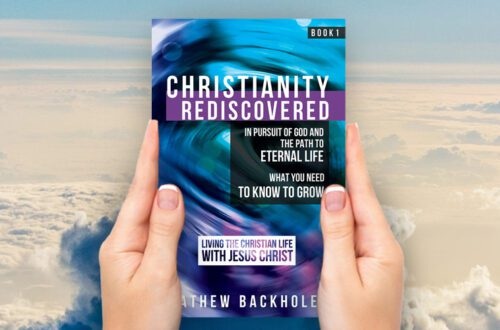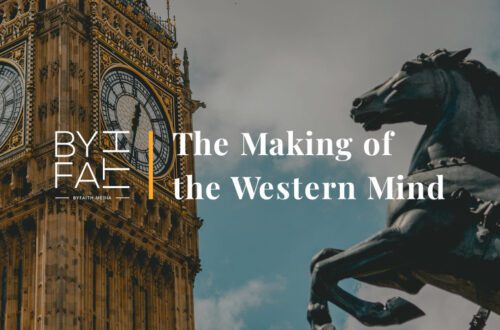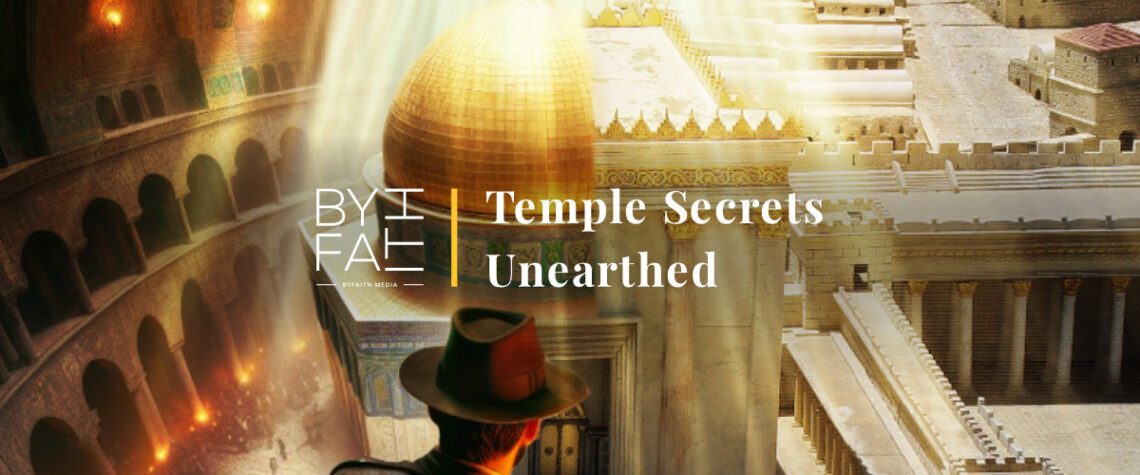
Herod’s Temple in the Bible, Secrets & Biblical Mysteries at the Time of Jesus in Jerusalem
Explore the secrets and mysteries of Herod’s Second Jewish Temple in Jerusalem. From cryptic ancient carvings, biblical gold, fragments of the Temple buildings to the legendary Foundation Stone inside the Dome of the Rock. Witness the secret chambers, the Well of Souls and rediscover the Jewish Temple’s lost glory. It’s time to unlock the mysteries, unveil the secrets, and bring this biblical marvel of the Second Temple in Jerusalem back to life!
The inside of the Temple was cedar, carved with gourds and open flowers
– 1 Kings 6:18
Watch the 4th episode of Walk the Bible and discover fifteen shocking items to unveil the great Jewish Temple in Jerusalem, that Jesus taught in.
Walk the Bible, Episode 4
Jerusalem Temple Secrets & Mysteries at the Time of Jesus Documentary
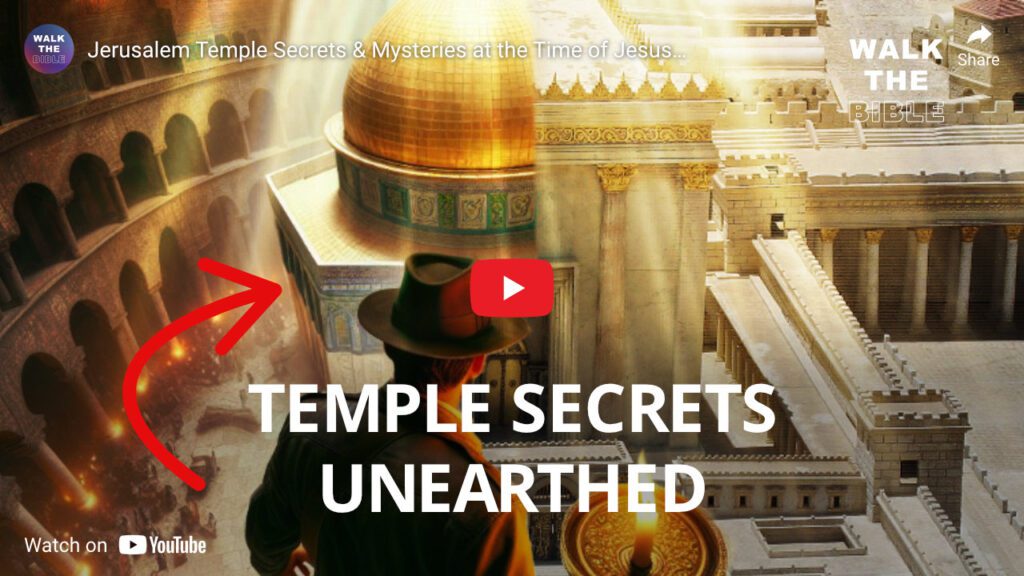
15. Lost Temple Images, Magdala Stone, Bar Kokhba Coins & Capernaum Torah Carriage
Let’s delve into the rich heritage of Herod’s Temple by studying striking visual depictions of it. No one had ever seen an image of the Second Jewish Temple until archaeology unveiled mysteries of the ancient world. One simple depiction of the Temple was uncovered on the Bar Kokhba coin, which dates to a period within the living memory of when Herod’s Temple stood. This coin provides a reliable representation that the descriptions of the Temple, such as possessing four great pillars, are correct. This was created in a period of chaos, so the design is very basic, but it represents a firsthand witness to the Temple.
Other examples of images from the Second Temple include the Magdala Stone, portraying items used in the Temple service including one of the earliest images of the seven-branched menorah, flanked by two biblical jars used in Temple service. Pillared archways depicted on the side of the stone may suggest the archway gates to enter the Temple. On top of the stone is a flowery pattern found in Herod’s Temple and perhaps depictions of offerings of bread. In Jesus’ hometown of Capernaum, an image of an ornate carriage was uncovered, which hints at the Ark of the Covenant, as the Torah was moved around in a wheeled shrine.
14. Surrounding Walls and Buildings in Jerusalem
Archaeologists are uncovering the secrets of biblical Jerusalem’s towers and landmarks, as we rediscover a world of architectural splendour. Because the Jewish Temple represented the holiest site in Jerusalem, the rich and powerful wanted to live near to it, and surrounding the Jewish Temple in Jerusalem were countless noteworthy buildings found in the Ophel, by the southern wall of the Second Temple to the Givati Parking Lot dig. The homes of the rich overlooked the Temple, like the Burnt House and the expensive buildings near the Temple prove the rich chose to abide near the Jewish Temple in ancient Israel.
He jumped to his feet and began to walk. Then he went with them into the Temple courts, walking and jumping, and praising God…while the man held on to Peter and John, all the people were astonished and came running to them in the place called Solomon’s Porch
– Acts 3:8, 11
13. King Herod’s Soffit Ceilings and Decorations
Prepare to be shocked, as we unveil the enchanting beauty of intricate details that adorned the magnificent Second Jewish Temple in Jerusalem. We now know what the interior of Herod’s Temple looked like because over 500 architectural decorations and fragments from the Holy Temple have been found in Israel. These include friezes, cornices, soffit ceilings, coffering, doorframes, column bases, drums and capitals, all found in the holy city of the Jews.
One item was discovered in the Ophel, the southern part of the Temple area probably from a ceiling panel going through the Triple Gates to the Temple or from the Temple room in the Royal Stoa. These Temple decorations dug from the ground or reused in ancient walls, show that Herod’s Temple included decorations in diamond shapes, circles, rectangular and geometric paneling. Dr Orit Peleg-Barkat is one of the experts researching and discovering the secrets of King Herod’s Temple.
12. Dome of the Rock Well of Souls Mosaic
Evidence for the Jewish Temple can be marshalled inside the Dome of the Rock, in Israel. Most non-Muslims are forbidden to enter this site, but if you’re an author, archaeologist or explorer, you may be granted special permission to visit.
When you enter this Muslim shrine on the Temple Mount, you survey the vast octagonal arcade of 24 piers and columns, under the colourful dome, but if you go underground down the secret steps there’s a ancient room with lost mosaics that are rarely seen. Paintings and photos suggest this style of mosaic is Herodian in nature, dating them back to the time of Jesus and if studies were permitted this could be confirmed. Until then, the mystery continues.
11. Herodian Paving in Situ on the Temple Mount
Have you ever questioned what happened to the Jewish stone floors on the Temple Mount? The answer is that many floor stones are still there. When King Herod extended the Temple Mount in preparation to build a larger Second Jewish Temple and the surrounding buildings, he utilised a particular style of stone from a quarry in Jerusalem. Some of these ancient stones can be encountered below your feet as you walk on the Temple Mount, so remember, look down to survey history as it comes alive.
10. Jerusalem’s Underground Structures, the Struthion Pool
Did you know you can see underground water cisterns used by the ancient Jews? Today, if you go beneath the surface of Jerusalem through ancient water tunnels, to the northwest of the Temple Mount area, you can find the ancient Sparrow Pool that sourced water for the Temple and the Antonia Fortress. This pool was built by King Herod and is presently divided into two parts, one part is drained and is under the control of the Sisters of Zion and this part is near the foundations of Herod’s Temple. The wall dividing the two was constructed to defend the Sisters of Zion complex from underground attack. The Struthion Pool can be translated as the Sparrow Pool.
9. Jesus’ Ministry in the Temple
Jesus walked in the Temple, in Solomon’s Porch
– John 10:23
Did you know the Temple occupied a critical role in the life of Jesus of Nazareth? Jesus’ ministry in the Jewish Temple can be cross-referenced with ancient sources to clarify the layout and design of the Temple. As an example, the Temple Courts are mentioned 34 times in the Gospels and Book of Acts, and they mention Solomon’s Porch three times.
The first century historian Josephus said King Solomon ‘added one cloister’ on the east of the Temple Mount which became known as Solomon’s Porch. It was in this porch that Jesus taught and where the early Church met. Therefore, by cross-referencing maps and archaeological discoveries with ancient roads, we can develop an accurate description of what gates Jesus and His followers entered and left the Temple from.
Now this Temple, as I have already said, was built upon a strong hill. At first the plain at the top was hardly sufficient for the holy house and the altar, for the ground about it was very uneven, and like a precipice; but when King Solomon, who was the person that built the Temple, had built a wall to it on its east side, there was then added one cloister founded on a bank cast up for it, and on the other parts the holy house stood naked
– War of the Jews by Josephus, Book 5, Ch. 5, Para 1
8. The Foundation Stone, Altar or Heart of the Jewish Temple
Inside the Shrine known as the Dome of the Rock is the Foundation Stone itself, known to Jews as the ’Navel of the Earth,’ Some believe this was the heart of the Jewish Temple in Israel, where the Ark of the Covenant stood and a carved area similar to size of the Ark can be found within the rock. Regrettably, each generation has removed pieces from the original bedrock, altering its original shape, and when the Romans destroyed the Second Temple in AD 70, they dug up its foundations damaging this rock in the process. Later, Christian pilgrims carved pieces out of the rock for souvenirs, so the Crusaders covered, like they did with the Tomb of Christ. Lamentably, the rock was damaged when this was removed in another conquest.
And King Solomon offered a sacrifice of twenty-two thousand head of cattle and a hundred and twenty thousand sheep and goats. So the king and all the people dedicated the Temple of God…Solomon consecrated the middle part of the courtyard…the bronze altar he had made could not hold the burnt offerings, the grain offerings and the fat portions
– 2 Chronicles 7:5, 7
Today, leading Jewish Rabbis cannot agree if this was the heart of the Temple where creation began and Abraham offered his son to God, or if this an area sanctified by Solomon for the vast sacrifices made on the Temple Mount.
Below this rock, there are at least two known chambers and a sealed tunnel which would have been perfect for expelling the blood from the sacrifices outside of the Temple. Therefore, some Rabbis tell all Jews to never walk on the Temple Mount for fear of trespassing the Holy Places, others say they know the Temple stood over this ancient bedrock and as long as they walk far from it, they are shelter from God’s wrath.
7. The Priest’s Court Marble Floor
Do you realise ancient parts of the Jewish Temple can be found on the Temple Mount today? Ancient sources tell us the Priest’s Court in Herod’s Temple, possessed a marble floor, so that the blood of the sacrifices did not seep into the limestone rock found elsewhere on the Temple.
In the first century book War of the Jews, Josephus says ‘and that stone was white marble.’ This marble stayed cool in the summer which assisted the priests as they walked barefoot in this holy place, and remnants of the white marble can be found on the Temple Mount today, but studying and dating them is illegal. The mystery continues.
6. Gold from the Jewish Temple, Corinthian Columns and Capitals
Have we found evidence for melted gold from the Second Temple in Jerusalem? On the Temple Mount and around Jerusalem several Corinthian columns and capitals exist which date back to the time of King Herod’s Temple.
If you look carefully at the delicate Corinthian capitals from the time of Jesus, you can find ancient rust, and inside, you can see tiny flickers of ancient melted gold from the great fire that destroyed the Jewish Temple. This is evidence for the violence that destroyed the Temple that Jesus knew.
Most of the column capitals on display in the Open Air Museum on the Temple Mount are from several different Muslim periods, with their capitals tending to be heavy in design, with thick protrusions, others are latticed in design. But a few of these column capitals are from the time of Jesus.
5. Fragments of the Temple of Herod
Can we unlock the secrets of the Second Temple in Jerusalem? Remarkably, we possess stones and fragments from the Second Jewish Temple in Jerusalem. These include stones reused from the Temple in other buildings to those unearthed. By examining these stones, we identify patterns that were employed on Herod’s Temple and were considered sacred by the Jews. The Jewish meander symbol mimics the twists and turns of the Jordan River and the patterns of flowers are noted in Solomon’s Temple. Due to these finds, we can see inside the Temple of Jerusalem.
In the Temple and later synagogues the Jews were content to borrow technology from the Greco-Roman world, such as paving their floors with elaborate mosaics, as long as they remained within the constraints of Scripture.
4. The Fleur-de-Lis, A Second Jewish Commonwealth Symbol
Did you know stones from the Second Temple were returned to the Temple Mount to be reused? One forgotten stone was part of King Herod’s Temple and was taken back to the Temple Mount and left on the west of the Temple Mount. Its fleur-de-lis flower represents a Jewish symbol from the Second Jewish Commonwealth Period that was carved into the Sacred Temple.
Many times, God instructed the Israelites in the Torah to carve flowers into the Temple and onto its items, such as the Menorah. Moses possessed a staff that budded and Israel is compared to a flower in the Bible, which is why flowers adorned the Temples in Jerusalem.
I am the rose of Sharon and the lily of the valleys
– Song of Solomon 2:1
3. The High Priest’s Golden Bell
Have archaeologists discovered an ancient item worn by the Temple Priests? Moses required the priests to wear golden bells on their garments, and one of these Second Temple bells has been found around Jerusalem, which fell from the priest’s clothing and was rediscovered two thousand years later in the drainage tunnel from the Jewish Temple.
A golden bell and a pomegranate, upon the hem of the robe all around
– Exodus 28:34
2. Muslim Leaders’ Testimonies, The Surprising Consensus Among Muslims on the Jewish Temple!
For centuries, Muslim authors, theologians and explorers celebrated that the Dome of the Rock was built upon the ancient site of the two Jewish Temples. This culminated in The Supreme Muslim Council of Jerusalem in 1925, publishing a guide to the Al-Haram Al-Sharif, the Nobel Sanctuary, known to us as the Temple Mount, declaring:
The site is one of the oldest in the world. Its sanctity dates from the earliest (perhaps from pre-historic) times. Its identity with the site of Solomon’s Temple is beyond dispute. This, too, is the spot, according to universal belief, on which “David built there an altar unto the Lord, and offered burnt offerings and peace offerings” (2 Samuel 24:25)
– Guide to The Al-Haram Al-Sharif (Temple Mount), The Supreme Muslim Council of Jerusalem in 1925,
Modern politics has changed the sentiments as Temple denial grows, especially as UNESCO denied the Jewish link to the Temple Mount in 2016, but whatever is said today, all ancient Muslim authors agree that two Jewish Temples stood on the Temple Mount.
1. Eyewitness Accounts, The Gospels, Josephus, Philo of Alexandria, the Talmud & other Jewish Writings
When the ancient Jews realised the Temple was not going to be rebuilt in their lifetime they began to write down descriptions of what it looked like and how it operated in preparation for the Third Temple in Jerusalem to be constructed.
Around the Sea of Galilee, in Sepphoris and other Jewish strongholds in ancient lands of Israel, the sacred knowledge of Temple life was written down and passed on, and combining this with the New Testament descriptions, it provides us with many eyewitness accounts of life of the Second Temple in Jerusalem. Hamat Tiberias is believed to be the home of the Sheba’al Peh (Oral Law) and Sepphoris is believed to be where the Mishnah, the Oral Torah, was written down.
Israel and Prophecy Fulfilled
In 1948, the State of Israel was reborn, fulfilling the Prophecy of Isaiah:
Can a country be born in a day or a nation be brought forth in a moment?
– Isaiah 66:8
In 1967, Israel’s ancient capital, Jerusalem, was reunified under Jewish control, fulfilling a the Prophecy of Jesus.
Jerusalem will be trampled underfoot by the Gentiles, until the times of the Gentiles are fulfilled
– Luke 21:24
The Jews are now preparing to fulfil one more biblical prophecy, the building of the Third Temple in Jerusalem, in preparation for the return of Messiah.
Go and measure the Temple of God and the altar, with its worshipers. But exclude the outer court; do not measure it, because it has been given to the Gentiles. They will trample on the holy city for forty-two months
– Revelation 11:1-2
By Paul Backholer. Find out about Paul’s books here.
Don’t forget to Subscribe to Walk the Bible on YouTube & follow us on social media @walkthebible to keep up-to-date with the latest episodes from Walk the Bible.
Sources and Notes
15. Temple Images, Magdala Stone, Caesarea & Bar Kochba Coin etc
- https://www.biblicalarchaeology.org/daily/ancient-cultures/ancient-israel/the-magdala-stone/
- https://madainproject.com/magdala_stone
- https://www.jewishvirtuallibrary.org/the-magdala-stone
- https://cityofdavid.org.il/en/rare-coin-from-the-bar-kochba-revolt-discovered-eng/
- https://www.ritmeyer.com/category/ark-of-the-covenant/
14. Surrounding Walls and Buildings, Givati Parking Lot Dig & Ophel, Jerusalem, etc.
- https://www.biblicalarchaeology.org/daily/news/jerusalem-tunnel-provides-glimpse-of-jewish-revolt/
- https://cityofdavid.org.il/en/5-things-to-know-about-the-givati-parking-lot-eng/
- https://www.antiquities.org.il/Article_eng.aspx?sec_id=25&subj_id=240&id=1596&hist=1
- https://madainproject.com/givati_parking_lot_dig
- https://www.biblicalarchaeology.org/dig/ophel-hill/
- https://madainproject.com/jerusalem_ophel
13. Herod’s Soffit Ceiling and Decorations
- https://library.biblicalarchaeology.org/images/bsba280202600ljpg/
- https://library.biblicalarchaeology.org/article/herods-roman-temple/
- https://library.biblicalarchaeology.org/article/relics-in-rubble-the-temple-mount-sifting-project/
- https://www.biblicalarchaeology.org/daily/biblical-sites-places/temple-at-jerusalem/temple-mount-sifting-project/
- https://armstronginstitute.org/913-ophel-excavation-2023
- https://oritpelegbarkat.huji.ac.il/publications/herodian-architectural-decoration
12. Well of Souls, Herodian Mosaics
- https://www.ritmeyer.com/2013/10/04/underground-battle-for-the-temple-mount/
- https://www.jerusalemexport.com/blogs/content/unveiling-the-secrets-of-the-mysterious-well-of-souls-in-jerusalem
- https://templemount.wordpress.com/2015/04/24/a-brief-report-about-carpets-replacements-and-the-floors-in-the-dome-of-the-rock/
- https://madainproject.com/well_of_souls_(temple_mount)
11. Herodian Paving in Situ on Temple Mount
- https://www.ritmeyer.com/2015/02/20/new-archaeological-discoveries-on-the-temple-mount-in-jerusalem/
- https://tmsifting.org/en/2007/11/22/three-years-for-the-sifting-project/
- https://www.jstor.org/stable/27925680
10. Underground Structures Struthion, Sparrow Pool, Jerusalem
- https://historicalsitesinisrael.com/en/the-struthion-pool/
- https://www.zomet.org.il/eng/?CategoryID=160&ArticleID=8695
- https://www.israelandyou.com/western-wall-tunnels-2/
- https://www.terrasanctamuseum.org/en/discover-more/the-archeological-site/
- https://templemountlocation.com/waterChannels.html
- https://www.jpost.com/travel/around-israel/solomon-pools-fit-for-a-king
9. Jesus’ Ministry in the Temple
- https://www.ritmeyer.com/2017/04/05/a-capital-from-solomons-porch-on-the-temple-mount/
- https://biblearchaeology.org/current-events-list/4161-capital-from-solomons-colonnade-found-at-temple-mount-dig
- https://templeinstitute.org/illustrated-tour-the-inner-courts/
- https://www.thegospelcoalition.org/blogs/justin-taylor/what-did-the-temple-look-like-in-jesus-time/
8. The Foundation Stone (Altar or the Heart of the Temple)
- https://www.ritmeyer.com/2012/06/30/the-foundation-stone-of-the-temple-in-jerusalem/
- https://www.templemount.org/earlytm.html
- https://smarthistory.org/the-dome-of-the-rock-qubbat-al-sakhra/
- https://www.ritmeyer.com/product/image-library/buildings/temples/the-rock-in-solomons-temple-2/
- https://www.biblicalarchaeology.org/reviews/the-temple-mount/
- https://www.templemount.org/notes.html
7. The Priests’ Court Marble Floor
- https://templemountlocation.com/herodTempleCourts2.html
- https://www.perseus.tufts.edu/hopper/text?doc=Perseus%3Atext%3A1999.01.0148%3Abook%3D5%3Asection%3D190
6. Gold from the Temple, Corinthian Columns and Capitals
- https://madainproject.com/corinthian_columns_(temple_mount)#gallery-1
- https://madainproject.com/corinthian_columns_(temple_mount)
- https://library.biblicalarchaeology.org/article/new-evidence-of-the-royal-stoa-and-roman-flames/
- https://www.ritmeyer.com/2014/11/24/the-temple-mount-in-the-herodian-period-37-bc-70-ad/
- https://www.academia.edu/34533929/THE_TEMPLE_MOUNT_EXCAVATIONS_IN_JERUSALEM_1968_1978_DIRECTED_BY_BENJAMIN_MAZAR_FINAL_REPORTS_VOLUME_V_HERODIAN_ARCHITECTURAL_DECORATION_AND_KING_HERODS_ROYAL_PORTICO
5. Fragments of the Temple
- https://library.biblicalarchaeology.org/article/the-ancient-cardo-is-discovered-in-jerusalem/
- https://library.biblicalarchaeology.org/article/the-emperors-new-church-on-main-street-jerusalem/
- https://www.haaretz.com/israel-news/travel/2013-05-26/ty-article/.premium/the-mosaic-map-of-jerusalem/0000017f-f721-ddde-abff-ff65119c0000
4. Fleur-de-Lis Second Commonwealth Symbol
- https://www.biblicalarchaeology.org/daily/biblical-sites-places/temple-at-jerusalem/temple-mount-sifting-project/
- https://mythologian.net/fleur-de-lis-symbol-its-meaning-history-origins/
- https://ransilberman.blog/tag/fleur-de-lis/
- https://truthvids.net/heraldry-and-symbols-of-the-12-tribes-of-israel/
- https://www.sefaria.org/Exodus.25.31-33?lang=bi&aliyot=0
- https://www.biblegateway.com/passage/?search=1+Kings+7%3A19&version=NIV
3. Second Temple Stones
- https://www.jewishvirtuallibrary.org/rare-second-temple-period-gold-bell-discovered-in-jerusalem
- https://www.biblicalarchaeology.org/daily/news/golden-bell-possibly-worn-by-temple-priest-found-in-jerusalem/
- https://www.patternsofevidence.com/2019/08/16/ancient-pilgrims-road-up-the-temple-mount-uncovered/
- https://www.ritmeyer.com/2011/07/21/have-archaeologists-discovered-high-priests-bell/
2. Muslim Leader’s Testimony
- https://www.israeltoday.co.il/read/muslims-again-admit-jewish-temples-stood-on-temple-mount/
- https://www.jewishvirtuallibrary.org/supreme-moslem-council-recognized-jewish-connection-to-temple-mount
- https://library.biblicalarchaeology.org/article/islam-on-the-temple-mount/
1. Eyewitness Accounts, The Gospels, Josephus, the Talmud Mishnah & other Jewish Writings
- https://www.biblegateway.com/passage/?search=Matthew+24%3A1-2&version=NKJV
- https://biblehub.com/library/josephus/the_wars_of_the_jews_or_history_of_the_destruction_of_jerusalem/chapter_5_a_description_of_2.htm
- https://penelope.uchicago.edu/josephus/war-5.html
- https://www.taylorfrancis.com/chapters/mono/10.4324/9780203424995-11/writings-philo-alexandria-robert-hayward
- https://www.worldhistory.org/article/1993/the-siege-of-jerusalem-in-70-ce/
- https://www.sefaria.org/Mishnah_Shekalim.5.3?lang=bi
Additional Evidence for the Jerusalem Temples
- https://armstronginstitute.org/194-jerusalems-temples-the-archaeological-evidence
- https://www.jewishvirtuallibrary.org/the-second-temple
- https://www.biblicalarchaeology.org/daily/biblical-sites-places/temple-at-jerusalem/the-stones-of-herods-temple-reveal-temple-mount-history/
- https://www.biblicalarchaeology.org/daily/biblical-sites-places/temple-at-jerusalem/what-did-herods-temple-in-jerusalem-look-like/
- https://madainproject.com/temple_mount_rubble_from_70_ce_destruction
- https://rsc.byu.edu/new-testament-history-culture-society/temple-herod
- https://www.jewishencyclopedia.com/articles/14304-temple-of-herod
- https://www.smithsonianmag.com/history/what-is-beneath-the-temple-mount-920764/
- https://library.biblicalarchaeology.org/article/herods-roman-temple/
- https://www.researchgate.net/publication/338717346_1917_to_the_Present_Al-Haram_al-Sharif_Temple_Mount_Har_Ha-Bayit_and_the_Western_Wall
- https://factsanddetails.com/world/cat55/sub351/entry-5715.html


